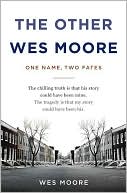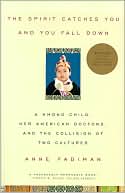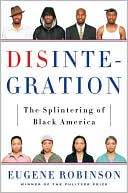The Price of Whiteness: Jews, Race, and American Identity
What has it meant to be Jewish in a nation preoccupied with the categories of black and white? The Price of Whiteness documents the uneasy place Jews have held in America's racial culture since the late nineteenth century. The book traces Jews' often tumultuous encounter with race from the 1870s through World War II, when they became vested as part of America's white mainstream and abandoned the practice of describing themselves in racial terms.\ American Jewish history is often told as a...
Search in google:
"This is an outstanding book. It offers scholars and general readers a complicated, nuanced, and sophisticated engagement with [the] issue."—Hasia R. Diner, New York University"Provocative and sure to spark discussion, this book will interest students of both American and Jewish history. It is a valuable contribution to scholarship in the field."—Deborah Dash Moore, University of Michigan Publishers Weekly Relationships between American Jews and African-Americans have a long, complicated history. Jews engaged in African-American civil rights work as early as the 1910s. Yet Jewish songwriter Irving Berlin felt a strong need to repudiate the indisputable influence of African-American music on his work. In this original, boldly conceptualized and well-researched inquiry into the complicated intersections of "race" and Jewish-American identity, Emory University's Goldstein explores how Jewish immigrants gradually began to understand themselves as "white" (i.e., fully European) when most of America did not. Goldstein writes that he has framed this book not "as a study of how Jews became white but as one that explores how Jews negotiated their place in a complex racial world," which makes this substantially different from such works as Karen Brodkin's How Jews Became White Folks and What That Says About Race in America. Using a dexterous mix of traditional history, sociology, critical race and whiteness studies. Goldstein brings together a wealth of examples-such as the turn-of-the-20th-century argument that Jews had a "primitive Negro past"-to explore the myriad ways the racialization of Jewishness formed a central tenet of ideas about race in American culture. (Mar.) Copyright 2006 Reed Business Information.
The Price of Whiteness\ Jews, Race, and American Identity \ \ By Eric L. Goldstein \ Princeton University Press\ Copyright © 2006 Princeton University Press\ All right reserved.\ ISBN: 0-691-12105-2 \ \ \ Introduction\ MANY AMERICANS today, focused as they are on the basic division between whites and "peoples of color," would undoubtedly accept the judgment of the eminent African American writer James Baldwin, who claimed in 1967 that Jews' history of difference and exclusion meant little in the United States. While the Jew had suffered abroad, wrote Baldwin at the height of the civil rights movement, here his "only relevance is that he is white." \ Baldwin's statement underscored the dramatically different experiences America had offered to Jews and blacks. In a society where the color line played a major role in determining social status, Jews had been able to achieve a high level of success and integration by the 1960s, while African Americans were often still fighting for basic freedoms. In arguing that the color line had created a wholly welcoming, unproblematic environment for Jews in American society, however, Baldwin failed to capture the tumultuousness that had often accompanied Jews' efforts to find acceptance in a society organized around the categories of "black" and "white." Far from playing the role of undifferentiated whites, Jews held an uncertain relationship to whiteness from the latenineteenth century until the end of World War II, a period when both Jews and non-Jews spoke of the "Jewish race" and of "Hebrew blood." Although these racialized understandings of Jewishness have long been discredited among scientists and laypeople, they were very real to those who employed them during these years. As this study argues, Jews' transition from "racial" minority to part of the white mainstream was slow and freighted with difficulty, not only because native-born whites had a particularly difficult time seeing Jews as part of a unified, homogenous white population, but also because whiteness sat uneasily with many central aspects of Jewish identity.\ To white Americans of the pre-World War II era, Jews were a racial conundrum, a group that could not be clearly pinned down according to the prevailing racial categories. Members of the dominant society had a long-standing investment in the notion of a clear racial dichotomy between blacks and whites, a vision that gave them a sense of unity and superiority as they faced the challenges of the nation. Despite the diverse nature of the American population and the presence of many groups that were considered distinct in a racial sense-Native Americans, Asians, Latinos and various European groups as well as African Americans-whites consistently tried to understand the racial landscape through the categories of "black" and "white." Thus, even as American racial commentators frequently spoke of Mongolians and Mexicans, Celts and Teutons, Alpines and Mediterraneans, they often struggled to suppress this unnerving complexity by marking some of these groups as good candidates for assimilation into white America and confirming others as racial outsiders by comparing them to and lumping them with African Americans.\ Jews, however, presented a mix of qualities that was unusual among American "racial" groups and proved particularly resistant to categorization within the black-white system. In the minds of white Americans, Jews were clearly racial outsiders in many ways, demonstrating distinctive social patterns, clustering in urban neighborhoods, concentrating in certain trades and professions, and largely marrying within their own group. At the same time, however, most Jews did not conform to the assumptions many Americans made about the lowly status of despised racial minorities. Certainly, there were poor Jews who lived in squalid conditions, especially after the massive wave of Jewish immigration from Eastern Europe began in the 1880s. But among European immigrant groups, Jews boasted an unusually high proportion of merchants and skilled workers, and they tended to rise rather quickly on the economic ladder. Unlike African Americans, who were seen by whites of the nineteenth and early twentieth centuries as the epitome of a backward, preindustrial race, Jews appeared to be thoroughly implicated in the urban, industrial, capitalist order that characterized the modern "civilized" world.\ Because white Americans saw Jews as racially different and yet similar to themselves in many ways, the image they attached to them tended to be much more ambivalent than the one fastened on African Americans and other more stable outsiders. Jews could be seen as contributors to progressive capitalism or as self-interested parasites; as disciplined and ambitious or as ruthlessly focused on profit. While the black-white discourse of race bolstered white Americans' sense of confidence and superiority, their image of the Jew reflected the doubts and anxieties they harbored about their own society, ultimately undermining the efficacy of their black-white worldview. During the initial decades of the century, white Americans often tried to suppress the troubling image of the Jew as they had suppressed the distinctiveness of other groups-either by comparing them to blacks or predicting their speedy assimilation into white society. Despite such efforts, however, the distinctiveness of the Jews and their failure to fit neatly within the categories of "black" and "white" continued to vex American commentators through the end of World War II.\ Another factor complicating the Jews' relationship to whiteness was their own intricate means of self-definition. While the knowledge that they were considered a problematic group in the American racial schema motivated Jews to try to conform to the prevailing racial paradigm and identify themselves unambiguously as white, their ongoing commitment to a distinctive identity often cut against their attempts to claim whiteness. These tensions emerged in two distinct situations. First, Jews faced a dilemma in determining what their proper approach should be to the nation's primary racial outsiders, African Americans. In order to allay fears that they were an unstable racial element in white society, Jews often felt the need to assert a distinguishing line between themselves and the country's black population. They hoped that by affirming the color line, they might help divert attention away from the problems raised by their own distinctiveness. Yet they often found their efforts complicated by a sense of identification with blacks and feelings of empathy for their plight. Though immigrants of many backgrounds had experienced persecution in their homelands, Jews were the group whose self-image was most thoroughly bound up with outsider status. As a result, they frequently had strong misgivings about engaging in the kind of exclusivist behavior from which they had long suffered. The Jews' highly ambivalent approach to African Americans during the pre-World War II period reflected their inability to either reject or embrace the racial conventions of white America.\ Second, an equally wrenching dilemma for Jews was the struggle they faced over their own racial self-definition. Having long been confined to the social margins of the Central and Eastern European societies in which they lived, Jews from those regions had come to see "apartness" as one of the most salient aspects of Jewish identity. As a result, in the American context they often defined themselves as a distinct "race," a description that captured their strong emotional connection to Jewish peoplehood. As Jews came under increasing scrutiny in American racial discourse, however, they were often torn between their commitment to Jewish racial identity and their desire to be seen as stable members of white society. Jews often tried to obscure, downplay, or tailor their racial self-understanding to conform to the needs of the larger culture, but ultimately it continued to make its claim on them as they fashioned themselves as white Americans. Thus, in multiple ways, claiming the status of "whites" in America was far from simple for Jews. It involved a complex emotional process in which conflicting desires for acceptance and distinctiveness often found no easy balance.\ In detailing Jews' uneasy relationship to whiteness, this book makes clear that the history of race in America cannot be reduced to a story of black and white. It demonstrates that the black-white racial dichotomy has functioned in American history less as an accurate description of social reality than as an ideology, which has been mobilized at critical points to control a much more complex and varied social landscape. By casting light on the constant, albeit unsuccessful, effort to fit Jewishness into a black-white framework, the book reveals white Americans' anxious attempts to obscure the fissures that divided them internally, underscoring just how tenuous the notion of a stable, monolithic whiteness has been in American life.\ Even as I underscore the ideological nature of the black-white divide and its insufficiency for understanding a diverse American population, however, I also recognize the power this vision of American society has had in shaping people's lives. First and foremost, African Americans have had to suffer the social consequences of an ideology that positioned them as the essential "others" of an idealized white America. My interest in this study, however, is to demonstrate the tremendous pressures Jews and similar groups were under to conform to the dominant racial paradigm, and the significant constraints that were placed on expressions of group difference by a world intent on seeing itself in terms of black and white.\ In writing this book, I have drawn on two very different streams of historical scholarship. First, I have been greatly influenced by the concerns of historians working in the field of American Jewish history. Their attention to the enduring influence of Jewish identity in the United States and the ways in which Jews continually tried to balance commitments to their group and to the larger society inform much of what is presented here. Despite my great debt to these scholars, however, I find that my conclusions are somewhat less sanguine than theirs about the degree to which Jews were able to synthesize American and Jewish identities. American Jewish history is often told as a story of successful adaptation and transformation, but when viewed through Jews' struggle with American racial culture, it is a story of hard choices and conflicting emotions.\ The second major influence on this work has been the recent literature on "whiteness" as a social construction. Here, I have found extremely helpful the groundbreaking insight that European immigrants did not automatically become white on these shores, but had to learn and claim this status as they acculturated. In the course of documenting Jews' uneasy encounter with race in America, however, I have been struck by the tendency of scholars in this field to posit a fairly uncomplicated embrace of whiteness by immigrant groups and to downplay the way in which other "racial" identities such as Irishness or Jewishness may have continued to disrupt, confound, or inflect the immigrants' understanding of themselves as white. As a result, they often leave the impression that while American racial categories were fluid and imprecise in the initial years of the various immigrant waves, such ambiguity was quickly resolved as immigrants responded to the overwhelming dominance of the black-white paradigm. The experience of American Jews, however (and I believe this holds true, albeit in different ways, for other immigrant groups as well), demonstrates that whiteness was not stable and monolithic but was constantly informed and reshaped by other competing identities.\ The story of American Jewish racial identity also makes clear how persistent the tensions between whiteness and Jewishness have been. Even the entrance of Jews into the white mainstream did not resolve them, for the more Jews became securely integrated in white society, the more their impulses for distinctiveness emerged. By the end of the twentieth century, an increasing number of Jews were asserting their "tribal" bonds to one another and stressing their "shared history" with African Americans, revealing nagging doubts about the toll acceptance in white America had taken on their own distinctive minority identity. Instead of facing the rejection of whites who were uncertain about Jewish racial status, Jews after 1965 encountered growing rejection by African Americans, who often challenged their right to present themselves as a persecuted minority. After a century, Jews were still struggling with the constraints of the black-white dichotomy. For reasons such as these, I have chosen not to frame this book as a study of how Jews became white, but as one that explores how Jews negotiated their place in a complex racial world where Jewishness, whiteness, and blackness have all made significant claims on them. In this way, the nuances, and the competing identities that never quite disappeared, have remained a central part of the story.\ Finally, this book complicates not only the dichotomous nature of American society and the monolithic understanding of whiteness; it also questions the simplistic way in which moral questions relating to whiteness are understood. Writing on whiteness almost always emphasizes the unmitigated benefits such an identity confers on the holder: power, social status, and financial rewards that are attained primarily by the exclusion of African Americans and other peoples of color. American Jews' struggle with whiteness, however, suggests that the story of racial assimilation in the United States cannot be reduced to a simple morality tale. To the extent that historians of whiteness have understood the constraints and pressures placed on acculturating immigrants by American racial culture, they have brushed over these themes to assert that identifying as white was largely a matter of individual choice. "White ethnics, while they lived under conditions not of their own choosing," writes David Roediger, "by and large chose whiteness, and even struggled to be recognized as white." Positing the "whitening" of immigrants as a power play from below, however, minimizes the degree to which they were pushed toward whiteness by the needs of the larger, white society. In many ways it was native-born whites, bent on preserving a stable and optimistic vision of their national culture, who had the greatest stake in seeing Jews take on the role of white Americans. Given such pressure from above, those who wished to enter the mainstream of American life were left with few alternatives. Certainly Jews, like all European immigrants, pursued whiteness; it was key to their meteoric rise to become one of the most successful American ethnic groups. But there was also a good deal of coercion involved in the process by which Jews became part of the white majority, a process that entailed significant losses as well as gains.\ In documenting Jews' encounter with whiteness, the chapters that follow explore its material and social benefits but also take seriously its emotional costs. They argue that even as Jews pursued whiteness, they wrestled with its consequences and tried to preserve other cherished means of self-definition that resided uneasily within its confines. While American Jews were never forced to deny their Jewishness altogether, the ultimate loss of "race" as a term for self-description rendered inarticulate some of their deepest feelings of group solidarity and difference. Similarly, the need to identify as white made it exceedingly difficult for Jews to assert a minority consciousness in American society, something that was extremely central to many Jews' self-conception. Some Jews were able to find an outlet for these feelings by expressing empathy for African Americans or becoming involved in civil rights causes. But for most Jews, who had to work hard to preserve their own social status in the years before World War II or who have been rebuffed in the years since by those who see Jews purely as white "insiders," even these surrogate expressions of minority consciousness could be accomplished only in an inconsistent, ambivalent way. Thus, acceptance often came at a heavy price, belying the widespread notion that the pursuit of whiteness conferred only privilege. While American Jews were often buoyed by their ability to move freely in white America, their entry into that world resulted in alienation, communal breakdown, and psychic pain as surely as it produced the exhilaration of acceptance in non-Jewish society.\ (Continues...)\ \ \ \ \ Excerpted from The Price of Whiteness by Eric L. Goldstein Copyright © 2006 by Princeton University Press. Excerpted by permission.\ All rights reserved. No part of this excerpt may be reproduced or reprinted without permission in writing from the publisher.\ Excerpts are provided by Dial-A-Book Inc. solely for the personal use of visitors to this web site. \ \
Pt. IThe Jewish "race" in America, 1875-1895Ch. 1"Different blood flows in our veins" : race and Jewish self-definition in late-nineteenth-century America11Pt. IIJews in black and white, 1896-1918Ch. 2The unstable other : locating Jews in progressive era American racial discourse35Ch. 3"Now is the time to show your true colors" : the Jewish approach to African Americans51Ch. 4"What are we?" : Jewishness between race and religion86Pt. IIIConfronting Jewish difference, 1919-1935Ch. 5Race and the "Jewish problem" in interwar America119Ch. 6"A white race of another kind"?138Ch. 7Wrestling with racial Jewishness165Pt. IVFrom old challenges to new, 1936-1950Ch. 8World War II and the transformation of Jewish racial identity189Epilogue : Jews, whiteness, and "tribalism" in multicultural America209
\ Congress Monthly[An] imaginative, provocative, and well-researched book.\ — Edward S. Shapiro\ \ \ \ \ New Republic - Elisa New\ A palimpsest layering institutional, communal, literary, religious, and visual materials, Goldstein's study moves deftly and amusingly through periods and across cultural domains to show how the Jews came to describe themselves. . . . Goldstein's presentation of a century and a half of Jewish 'negotiation' of whiteness is fascinating chapter by chapter, and deft in communicating the bewildering diversity and reactivity of Jewish relationships to the black community.\ \ \ Chronicle of Higher EducationMore than any other historian to date, Goldstein . . . shows the changing ways in which Jewish Americans themselves argued either for their own racial particularity, or for their inclusions as whites, or for both.\ \ \ \ \ Southern Jewish HistoryEssential reading for understanding ethnic/race relations and Jewish identity. Goldstein provides an excellent history of Jewish efforts to place themselves within the American racial hierarchy.\ \ \ \ \ Journal of Modern Jewish StudiesEric Goldstein demonstrates in this intriguing and insightful study [that] it would be much too short-sighted to regard race solely as a problematic concept imposed on American Jews in order to marginalize them.\ \ \ \ \ American Jewish HistoryEric L. Goldstein's book should be among the very first stops for those wishing to approach the subject of Jews and race in America.... It is broad, well researched, compellingly told, extraordinarily nuanced, and it comes as a kind of savior to an area of scholarship that has suffered from large gaps regarding basic historical fact.\ \ \ \ \ Jewish Political Studies ReviewEric Goldstein, an American historian, has written a fascinating, meticulously documented book that . . . shows that American Jews' definition of the Jewish collectivity, for themselves as well as for others, has undergone significant change over the past two centuries, to a large extent reflecting their varying sense of security in American society.\ \ \ \ \ ShofarGoldstein's The Price of Whiteness is a valuable addition to the study of the American Jewish community in the twentieth century. . . . Even though Jews are likely to remain ambivalent on what is a Jew, Goldstein's book has provided much solid research, thoughtful reflection, and added insight on this question. The book is recommended without hesitation or reservation.\ \ \ \ \ American Jewish Archives JournalThe Price of Whiteness is technically solid, with insightful writing and organization. . . . The Price of Whiteness is even more relevant than Goldstein is willing to claim. This is a highly readable, well-researched, and equitable examination of one of the most interesting topics in American Jewish history and a book worthy of consideration for course adoption in this field.\ \ \ \ \ Congress Monthly[An] imaginative, provocative, and well-researched book.\ \ \ \ \ New RepublicA palimpsest layering institutional, communal, literary, religious, and visual materials, Goldstein's study moves deftly and amusingly through periods and across cultural domains to show how the Jews came to describe themselves. . . . Goldstein's presentation of a century and a half of Jewish 'negotiation' of whiteness is fascinating chapter by chapter, and deft in communicating the bewildering diversity and reactivity of Jewish relationships to the black community.\ — Elisa New\ \ \ \ \ Chronicle of Higher EducationMore than any other historian to date, Goldstein . . . shows the changing ways in which Jewish Americans themselves argued either for their own racial particularity, or for their inclusions as whites, or for both.\ — David Roediger\ \ \ \ \ Southern Jewish HistoryEssential reading for understanding ethnic/race relations and Jewish identity. Goldstein provides an excellent history of Jewish efforts to place themselves within the American racial hierarchy.\ — Ronald H. Bayor\ \ \ \ \ Journal of Modern Jewish StudiesEric Goldstein demonstrates in this intriguing and insightful study [that] it would be much too short-sighted to regard race solely as a problematic concept imposed on American Jews in order to marginalize them.\ — Tobias Brinkmann\ \ \ \ \ ChoiceEric L. Goldstein has written a penetrating and illuminating account of US Jews' entanglement with 'race' from the last third of the 19th century to the present. . . . [T]his is a thought-provoking text that deserves a wide readership.\ \ \ \ \ American Historical ReviewThis is a field well-trodden in recent years, but Eric L. Goldstein adds both earnest research and close interpretation to the inherently limitless question of Jewish-American 'identity.'\ \ \ \ \ American Jewish HistoryEric L. Goldstein's book should be among the very first stops for those wishing to approach the subject of Jews and race in America.... It is broad, well researched, compellingly told, extraordinarily nuanced, and it comes as a kind of savior to an area of scholarship that has suffered from large gaps regarding basic historical fact.\ — Michael Alexander\ \ \ \ \ Jewish Political Studies ReviewEric Goldstein, an American historian, has written a fascinating, meticulously documented book that . . . shows that American Jews' definition of the Jewish collectivity, for themselves as well as for others, has undergone significant change over the past two centuries, to a large extent reflecting their varying sense of security in American society.\ — Chaim I. Waxman\ \ \ \ \ ShofarGoldstein's The Price of Whiteness is a valuable addition to the study of the American Jewish community in the twentieth century. . . . Even though Jews are likely to remain ambivalent on what is a Jew, Goldstein's book has provided much solid research, thoughtful reflection, and added insight on this question. The book is recommended without hesitation or reservation.\ — Saul Lerner\ \ \ \ \ American Jewish Archives JournalThe Price of Whiteness is technically solid, with insightful writing and organization. . . . The Price of Whiteness is even more relevant than Goldstein is willing to claim. This is a highly readable, well-researched, and equitable examination of one of the most interesting topics in American Jewish history and a book worthy of consideration for course adoption in this field.\ — Glen Anthony Harris\ \ \ \ \ Publishers WeeklyRelationships between American Jews and African-Americans have a long, complicated history. Jews engaged in African-American civil rights work as early as the 1910s. Yet Jewish songwriter Irving Berlin felt a strong need to repudiate the indisputable influence of African-American music on his work. In this original, boldly conceptualized and well-researched inquiry into the complicated intersections of "race" and Jewish-American identity, Emory University's Goldstein explores how Jewish immigrants gradually began to understand themselves as "white" (i.e., fully European) when most of America did not. Goldstein writes that he has framed this book not "as a study of how Jews became white but as one that explores how Jews negotiated their place in a complex racial world," which makes this substantially different from such works as Karen Brodkin's How Jews Became White Folks and What That Says About Race in America. Using a dexterous mix of traditional history, sociology, critical race and whiteness studies. Goldstein brings together a wealth of examples-such as the turn-of-the-20th-century argument that Jews had a "primitive Negro past"-to explore the myriad ways the racialization of Jewishness formed a central tenet of ideas about race in American culture. (Mar.) Copyright 2006 Reed Business Information.\ \








